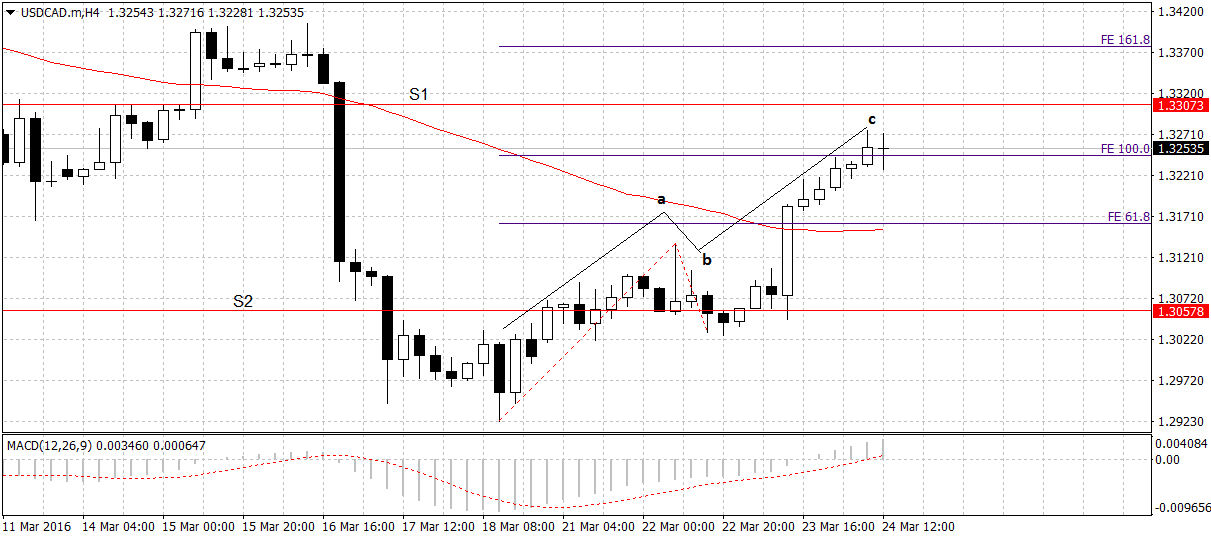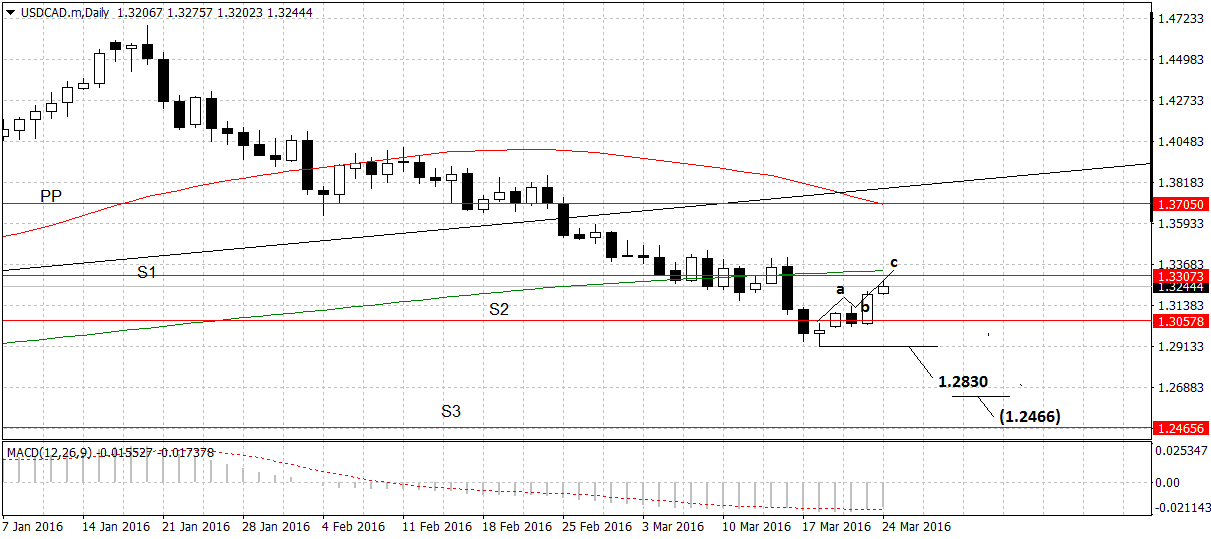US Dollar in Sharp Rally Against Canadian Dollar - Is this the End of CAD Strength?
USD/CAD has seen a dramatic reversal in fortunes over then past 48 hours and has undergone a sharp rally since basing at the March 18 lows.

USD/CAD has undergone a sharp rally since basing at the March 18 lows.
The rebound has been particularly strong over recent days, as evidenced on the four-hour chart below:
Note how the correction has risen in three broad waves, which I have labelled.
This sort of three-wave correction is common in strongly trending markets.
Normally once completed the market resumes its dominant trend, which in this case is down.
From a fundamental perspective wave ‘a’ roughly corresponds with more hawkish commentary from Federal Reserve Officials, which caused a rise in the dollar.
US Fed Member Bullard indicated that there may be a case for raising interest rates as early as April, given the possibility of inflation overshooting and lower unemployment targets.
This added to recent hawkish comments from Fed Members Williams, Lockhart, and Evans.
The ‘c’ wave of the correction corresponds to a fall in the price of oil, which moved from above 40 dollars a barrel (WTI) reaching a peak of 42, before moving back below 40.
The Canadian Dollar is closely linked to oil because it is such a big oil producer and exporter.
The daily chart below shows the bigger picture, which is that the USD/CAD had been in a sharp down-trend since peaking at 1.46 in January.
The sharp correction is also labelled with the three waves but it does not look as strong a rebound on the daily chart as on the four-hour.
In addition, the exchange rate has almost reached a double-resistance level at 1.3307 composed of both the 200-day moving average and S1 monthly pivot.
These are both levels where traders tend to cluster waiting to buy - or in this case sell - financial assets, so if the exchange rate reaches them it is likely to come under sever selling pressure and move back down.
For confirmation of a stronger recovery taking root, a clear and definitive break above these levels would be required, confirmed by a move above the 1.3405 highs.
In the absence of a break above 1.3405 we retain our bearish view of the currency pair, which we expect to continue lower, with a break below the former March 18 lows at 1.2922 confirming a move down to the next major support level at 1.2830, from major trough lows in October 2015 during the pair’s previous up-trend.
Dutch lender revises forecasts to more bearish outlook
Further evidence that the correction may be short-lived comes from recent fundamental analysis from Dutch bank Abn Amro, who have revised down their outlook for the pair, which they now expect to fall to 1.26 in 2016, on the back of appreciating oil prices combined with a weakening dollar.
Their central case remains that the dollar’s rally is over due to a change in monetary policy tack from the Fed and political risk due to presidential elections later this year. Further they argue that commodities will rally. The weaker dollar will obviously also lend fuel to that rally as commodities are priced in dollars.
“Oil prices have already recovered substantially from the below USD 30 per barrel level. However, our energy analyst expects that there is more upside. His forecast for the end of 2016 for Brent oil prices is USD 55 per barrel and for the end of 2017 USD 60 per barrel. Currencies of oil exporting countries have moved in tandem with oil prices (see graph above). We expect this to continue going forward.”
In the case of the Canadian Dollar they see further strength coming from the impact of the March 22 budget, which included a programme of spending to stimulate the economy.
According to the Economist the new Liberal Prime Minister Justin Trudeau delivered on his promise to increase investment and jettison the austerity of previous governments:
“His government’s first budget, presented by the finance minister, Bill Morneau, broke decisively with the austerity of the previous
Conservative administration. Faced with an economy weakened by low commodity prices, Mr Trudeau and his finance minister had no hesitation in keeping the lavish promises of extra spending made by their Liberal Party during the election campaign.”
This is expected to support CAD by removing the need for the Bank of Canada to have to use monetary stimulus to spark economic activity. Monetary stimulus involves either lowering interest rates or printing money, both of which are negative for the economy.












